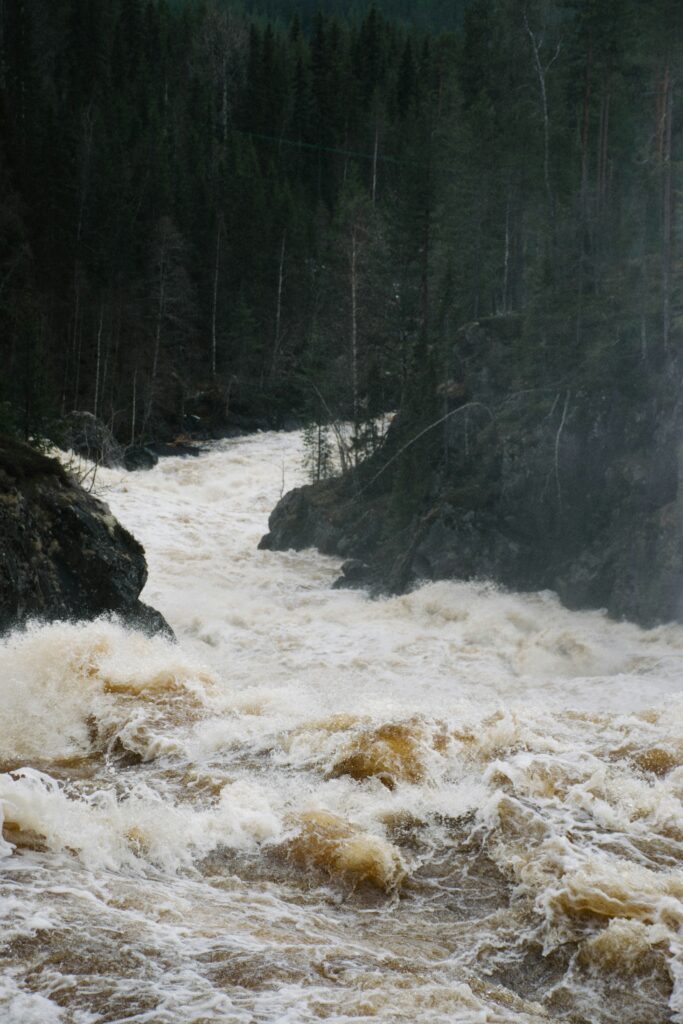Preparing for California’s Flash Flood Watch 2025: Essential Safety Steps for Residents
A major storm system is approaching Southern California, prompting officials to issue flood watches across multiple regions. You need to prepare for potential flash flooding, as more than seven million California residents face flood risks, and many are unaware of their vulnerability.

The incoming weather system, described as the strongest storm in a year, threatens both Southern California and the Sierra foothills east of the San Joaquin Valley. Your location may experience various types of flooding, including flash floods, debris flows, or coastal flooding.
Creating an emergency plan now can protect your life and property. While a flood watch doesn't guarantee flooding will occur, it signals conditions are favorable for rapid water accumulation. You should stay alert to changing weather conditions and be ready to evacuate if local authorities issue warnings.
Preparing for California's Flash Flood Watch 2025: Essential Safety Steps for Residents
Understanding Flash Flood Watches
Flash flood watches alert you to dangerous flooding conditions before they occur, giving precious time to prepare and stay safe. The National Weather Service issues these alerts when specific weather patterns indicate a high risk of rapid flooding.
Criteria for Issuing a Flash Flood Watch
Flash flood watches are declared when weather conditions make flash flooding possible but not yet certain. Heavy rainfall over a short period is the primary trigger.
Multiple factors determine if a watch will be issued for your area:
- Rainfall intensity and duration
- Soil saturation from previous storms
- Burn scars from wildfires
- Urban areas with poor drainage
- Steep terrain that channels water quickly
In California, burn scar areas face heightened risk of debris flows during intense rain events.
Role of the National Weather Service
The National Weather Service monitors weather patterns 24/7 to identify potential flash flood conditions. Their meteorologists analyze:
- Weather radar
- Rain gauge data
- River levels
- Ground conditions
When conditions warrant, they issue flash flood watches to give you time to prepare. These watches typically cover large geographic areas where flooding is possible.
You should monitor local weather updates and be ready to move to higher ground if conditions worsen. The NWS may upgrade the watch to a warning if flash flooding becomes imminent.

Assessing Flood Risks
Understanding your specific flood risks in California requires evaluating multiple environmental factors that can trigger dangerous flooding conditions.
Identifying Local Flood-Prone Areas
Every county in California has experienced federally declared flood disasters within the past two decades. Your location directly affects your risk level and necessary preparation steps.
Contact your local county geologist or planning department to determine if your property lies in a flash-flood zone. Pay special attention if you live near streams, drainage channels, or at the base of hills.
Create a detailed evacuation plan based on your local terrain. Keep emergency routes updated and identify multiple exit paths from your neighborhood.
Impact of Atmospheric Rivers and Winter Storms
Atmospheric rivers bring intense rainfall that can quickly overwhelm drainage systems and cause small-stream flooding. These weather systems typically affect California between November and March.
Monitor weather forecasts daily during storm season. Pay attention to predicted rainfall amounts and timing, especially when forecasts show multiple storms arriving in quick succession.
Your local watershed conditions play a crucial role in flood development. Saturated soil from previous storms increases flood risk even with moderate additional rainfall.
Burn Scars and Debris Flow Concerns
Wildfire-scarred hillsides create dangerous conditions during rainy seasons, as burned soil repels water instead of absorbing it. This dramatically increases landslide and debris flow risks.
If you live below or near recent burn areas, be extra vigilant during storms. Debris flows can move faster than you can run and carry large objects like boulders and trees.
Set up weather alerts on your phone and prepare to evacuate immediately when warned. Just 1/4 inch of rain in 15 minutes can trigger destructive debris flows on burn scars.

Emergency Preparedness Strategies
Being ready for flash floods requires having detailed plans and essential supplies organized before disaster strikes. Proper preparation can mean the difference between safety and serious risk during an emergency evacuation.
Developing a Robust Emergency Plan
Create a family communication plan that includes out-of-state contacts and a designated meeting location if you become separated.
Map out multiple evacuation routes from your home and workplace. Practice these routes with your family regularly.
Keep important documents in waterproof containers, including:
- Insurance policies
- Identification cards
- Medical records
- Property deeds
- Birth certificates
Set up emergency alerts on your phone through your local emergency management office.
Building an Emergency Supply Kit
Your home emergency supply kit should contain enough provisions for at least 72 hours. Store supplies in airtight containers in an easily accessible location.
Essential Items:
- 1 gallon of water per person per day
- Non-perishable food
- Manual can opener
- Battery-powered radio
- Flashlights and extra batteries
- First aid supplies
- Prescription medications
- Basic tools
- Warm blankets
Check expiration dates every six months and replace items as needed.
Creating a Go-Bag for Evacuation
Pack a lightweight, portable go-bag for each family member. Place bags near your main exit or in your vehicle.
Go-Bag Contents:
- 3-day supply of water and non-perishable snacks
- Change of clothes and sturdy shoes
- Basic hygiene items
- Small first aid kit
- Phone charger and portable battery
- Cash in small bills
- Copies of essential documents
- Multi-tool
- Emergency contact list
Review and update your go-bag contents every three months.

Evacuation Planning and Routes
Having clear evacuation plans and knowing your routes ahead of time can mean the difference between safety and danger during flash floods in California. Proper preparation requires mapping multiple escape paths and staying informed about official orders.
Understanding and Following Evacuation Orders
Pay close attention to local emergency alerts from authorities. When officials issue an evacuation order, you must act immediately – every minute counts.
Establish a family communication plan before disaster strikes. Choose an out-of-area contact who can relay messages between separated family members.
Keep your gas tank at least half full during flood season. Pack essential documents, medications, and supplies in a waterproof container that's ready to grab.
Mapping Out Evacuation Routes and Safe Zones
Learn multiple evacuation routes that lead to higher ground. Avoid paths that cross streams, bridges, or low-lying areas.
Primary Route Requirements:
- Must bypass bodies of water
- Should use major roads when possible
- Needs to lead to designated safe zones
Familiarize yourself with local street names and keep physical maps in your vehicle. Mark potential meeting points along each route where family members can reconnect if separated.
Shelter in Place vs. Evacuation: When to Choose
Evaluate the risks carefully before deciding to shelter in place. If your home sits on high ground and is structurally sound, staying put might be safer than traveling through flood conditions.
When to Shelter in Place:
- Official guidance recommends it
- Your location is above flood levels
- Roads are already impassable
When to Evacuate:
- Mandatory orders are issued
- You're in a flood-prone area
- Clear escape routes still exist
Move to upper floors if sheltering in place. Keep emergency supplies and a battery-powered radio within reach.

Staying Informed with Local Emergency Alerts
Real-time emergency notifications save lives during flash floods and severe weather events. Reliable alert systems and hazard monitoring tools give you critical time to prepare and respond.
Setting Up Alerts and Updates
Sign up for free emergency alerts through your county's notification system to receive life-saving information about evacuations, dangers, and safety instructions. Text messages, calls, and emails will notify you about potential disasters in your area.
Create a family communication plan with emergency contacts and meeting locations. Share this plan with everyone in your household.
Dial 311 for non-emergency assistance and questions. For critical emergencies, always call 911.
Using MyHazards for Location-Specific Risks
MyHazards is a free online tool that identifies flood risks and natural hazards specific to your address. Enter your location to view detailed maps and assessment reports.
The tool provides customized preparedness recommendations based on your area's risk factors. You'll receive guidance on emergency supplies, evacuation routes, and safety procedures.
Monitor local weather forecasts frequently during storm season. Pay special attention to flash flood watches and warnings issued by the National Weather Service.
Enable weather alerts on your mobile devices to stay updated about changing conditions.

Safety Tips During Flood Watch
Flash floods pose serious risks in California, requiring immediate action to protect lives and property. Preparation and vigilance are essential when authorities issue a flood watch.
Securing Your Home and Property
Gather emergency supplies and store them in an easily accessible location. Keep a battery-powered radio, flashlights, first-aid kit, and essential medications ready.
Turn off all utilities if evacuation seems likely. Disconnect electrical appliances and avoid touching electrical equipment if wet.
Move valuable items and important documents to higher floors or elevate them. Clear gutters and drains to prevent water buildup.
Place sandbags around your property's perimeter, focusing on doorways and low-lying areas. Keep important contact numbers handy, including local emergency services.
Safety Precautions for Flash Flooding
Sign up for California Emergency Alerts to receive real-time notifications about flooding in your area.
Create and practice an evacuation plan with your family. Identify multiple escape routes and establish a meeting point.
Keep your vehicle's gas tank full and emergency kit stocked. Prepare a “go bag” with essential items like water, non-perishable food, and clothing.
Monitor local weather updates constantly during a flood watch. Don't wait for an evacuation order – leave immediately if conditions worsen.
Avoiding Roadway Flooding and Strong Winds
Never drive through flooded roads – just six inches of moving water can sweep away a person, while two feet can carry away most vehicles.
Stay alert for downed power lines and debris carried by strong winds. Keep a safe distance from trees and power poles during storms.
If caught in rising water while driving, abandon your vehicle immediately and move to higher ground. At night, be especially cautious as flood dangers are harder to recognize.
Use alternate routes if you encounter flooded areas. Remember the safety phrase: “Turn Around, Don't Drown.”

Preparedness for Pets and Animals
Pet preparedness during flash floods requires specific supplies and knowledge of evacuation policies to keep your animals safe during emergencies.
Creating a Pet Emergency Kit
Pack a waterproof container with at least 3 days of pet food, medications, and supplies. Include copies of vaccination records and registration documents.
Store fresh water – one gallon per pet per day. Add bowls, can openers, and familiar treats.
Pack comfort items like blankets, toys, and grooming supplies. Include waste bags, litter, and cleaning materials.
Keep current photos of your pets for identification purposes. Add detailed descriptions noting distinguishing marks or features.
Understanding Animal Policies During Evacuations
Identify pet-friendly evacuation locations in advance, including hotels and shelters that accept animals. Keep a list of multiple options within and outside your area.
Contact your local emergency management office to learn specific pet evacuation procedures. Some shelters only accept service animals.
Ensure all pets wear current ID tags and have microchips with updated contact information. Keep leashes, carriers, and restraints easily accessible.
Practice loading pets into carriers regularly. Fearful animals may resist during actual emergencies.
Managing Utilities and Services
Proper management of utilities and flood defense equipment helps protect your home during flash floods. Having backup power systems and water removal tools ready can prevent extensive damage to your property.
Preparing for Power Outages
Keep a battery-powered or hand-crank radio to stay informed about emergency instructions and flood warnings.
Store flashlights, batteries, and portable phone chargers in an easily accessible location. Check and replace batteries every six months.
Install surge protectors to safeguard valuable electronics. Consider purchasing a portable generator, but never operate it indoors or in enclosed spaces.
Create a list of emergency contacts including utility companies and emergency services. Keep this information in a waterproof container.
Use of Sump Pumps and Other Flood Defenses
Install a battery backup for your sump pump to ensure continuous operation during power outages. Test the pump regularly and clear debris from the pit.
Position sandbags around entry points and install backflow valves on basement drains. Keep spare parts and basic tools for emergency pump repairs.
Your sump pump's discharge pipe should extend at least 20 feet from your home's foundation. Ensure the pipe directs water away from neighboring properties.
Install flood sensors in basements and crawl spaces to provide early warning of water intrusion. These devices can alert you via smartphone when water is detected.

Post-Flood Watch Recovery
After floodwaters recede, quick action helps prevent additional property damage and health risks. Early damage assessment and proper cleanup techniques are crucial for a safe return home.
Assessing and Reporting Damage
Document all damage with photos and videos before beginning cleanup. This documentation is essential for insurance claims and potential disaster assistance.
Contact your insurance company immediately to report flood damage and begin the claims process. Many insurers require immediate notification.
Local emergency management offices can help assess structural damage and determine if your home is safe to enter.
Be alert for post-flood hazards in burn scar areas, including unstable ground and potential mudslides. Stay tuned to emergency alerts for ongoing risks.
Cleanup and Return to Normalcy
Remove standing water and wet materials promptly to prevent mold growth. Use pumps and wet vacuums for water removal.
Protect yourself during cleanup:
- Wear rubber boots and waterproof gloves
- Use N-95 masks when handling moldy items
- Avoid direct contact with flood water
Watch for chemical hazards that may have been moved or exposed by flood waters. Keep children and pets away from contaminated areas.
Sort debris into categories: household garbage, construction materials, vegetation, and hazardous waste. Follow local guidelines for proper disposal.
Resources and Support
Multiple state agencies and community organizations provide critical flood emergency assistance and disaster preparedness resources to California residents.
Contacting the California Governor's Office of Emergency Services
The California Office of Emergency Services (Cal OES) maintains a 24/7 emergency hotline at 1-800-CALOES-1. You can register for emergency alerts through their website at caloes.ca.gov.
Cal OES offers real-time updates on road conditions, evacuation orders, and emergency shelter locations through their mobile app and social media channels.
You can access their disaster readiness guides and emergency plan templates through their online portal. These materials help you create customized evacuation routes and emergency contact lists.
Community and Government Assistance Programs
Local flood fight resources include pre-positioned emergency supplies across 25 counties, with over 3.7 million sandbags available for residents.
Your county's Office of Emergency Management provides free emergency preparedness workshops and essential items like emergency radios and first aid kits.
Contact your local Community Emergency Response Team (CERT) for:
- Free disaster preparedness training
- Flood insurance information
- Emergency shelter locations
- Volunteer opportunities
The Department of Water Resources offers flood zone mapping tools and flood preparedness guides specific to your region.







